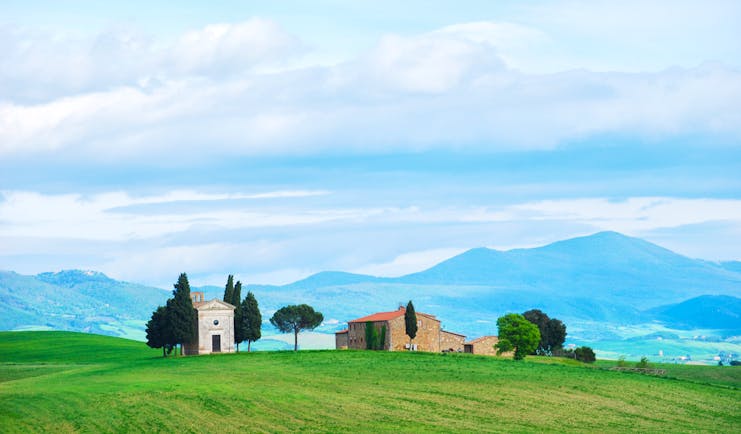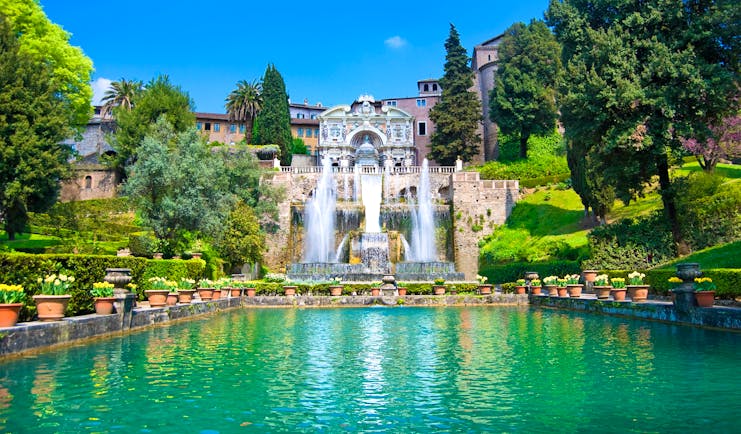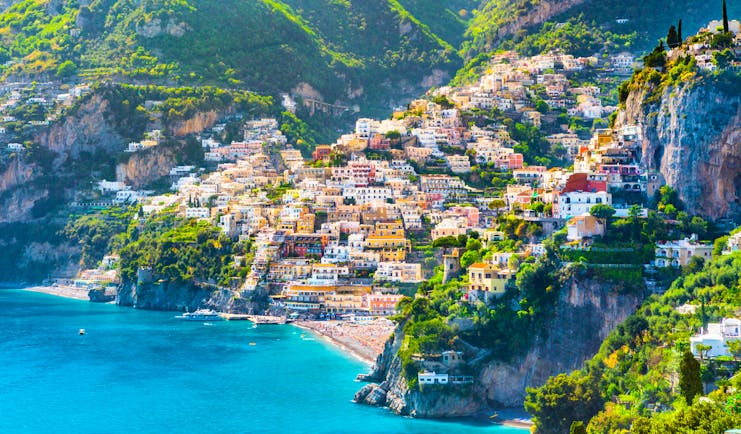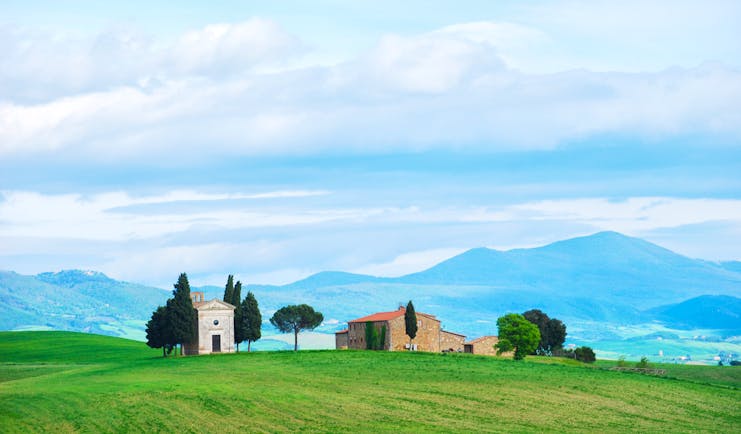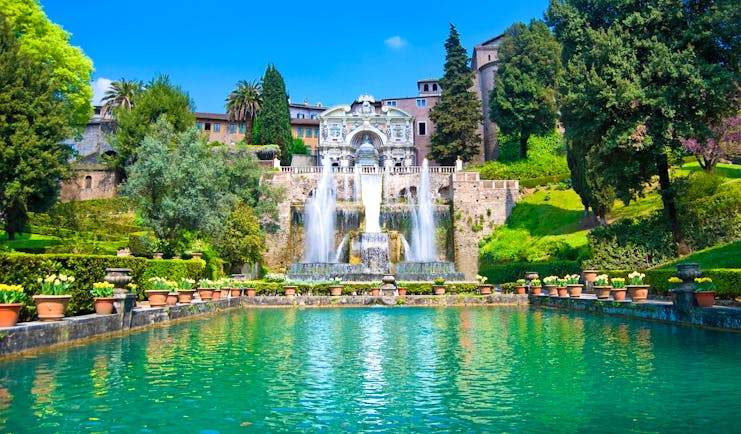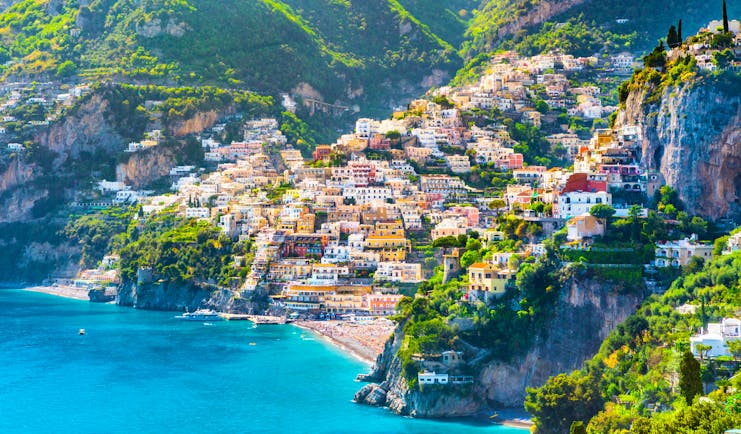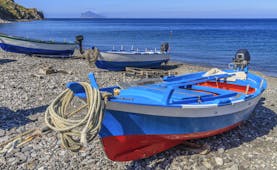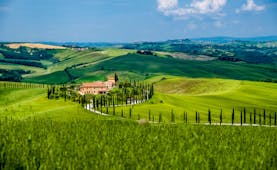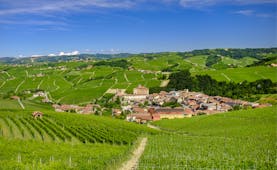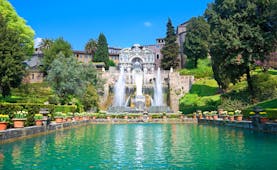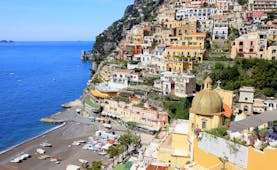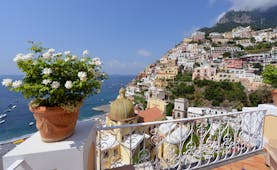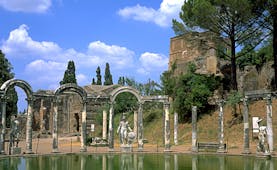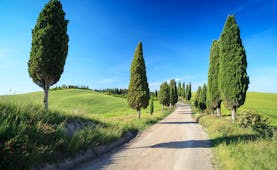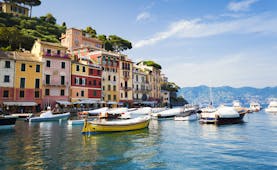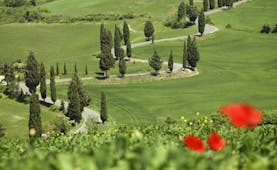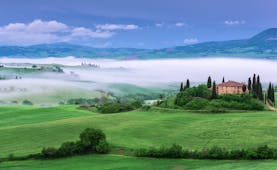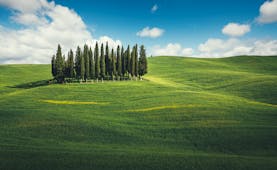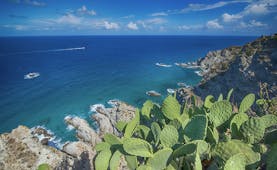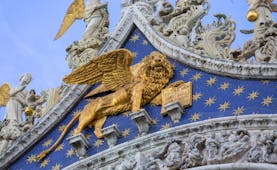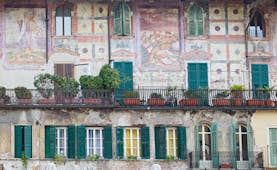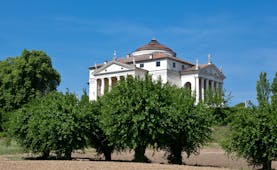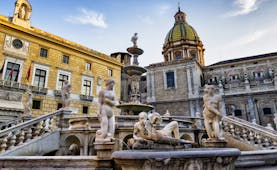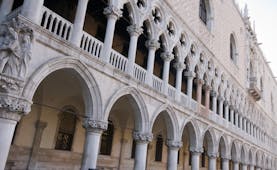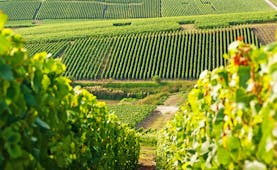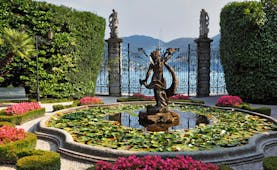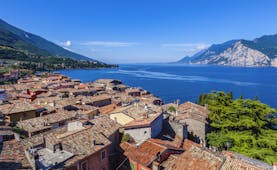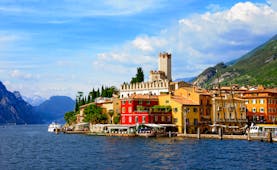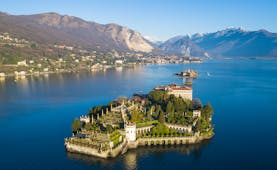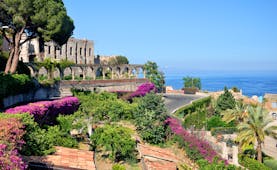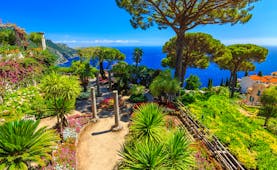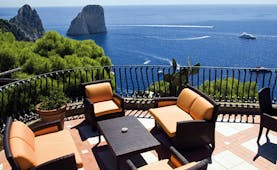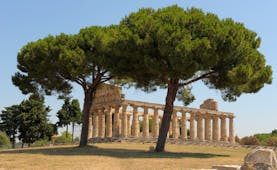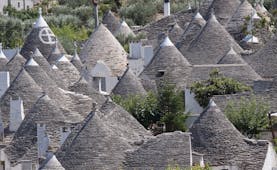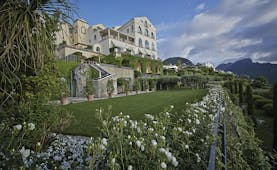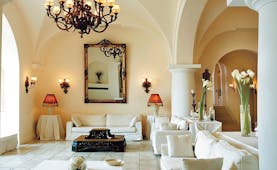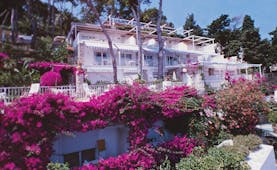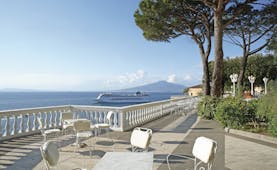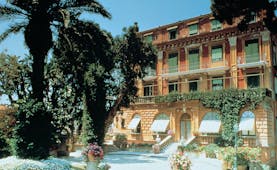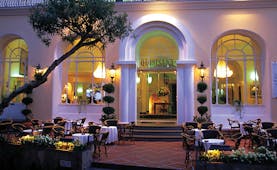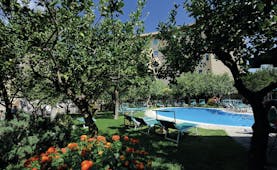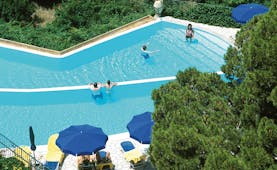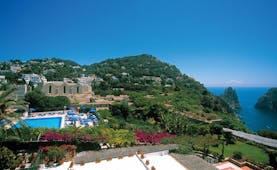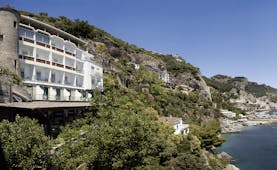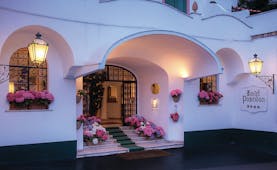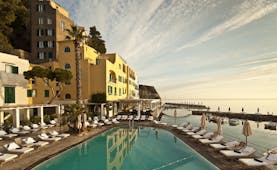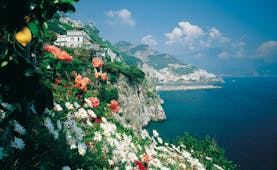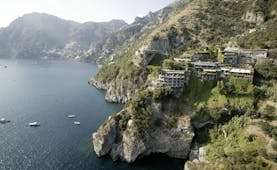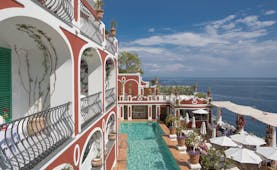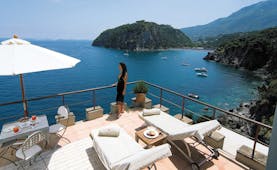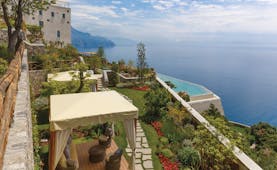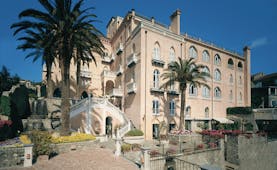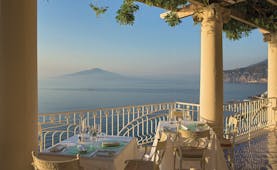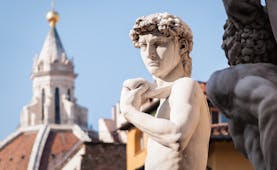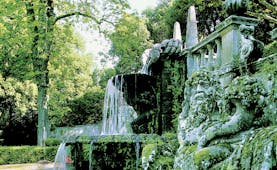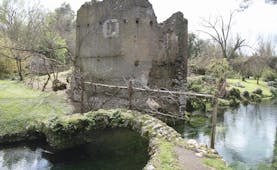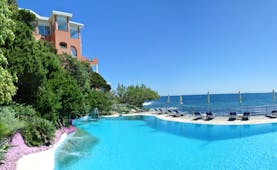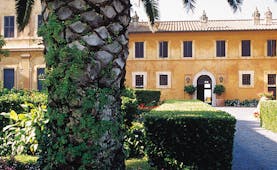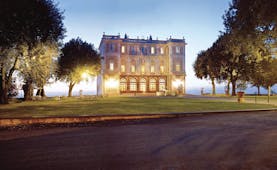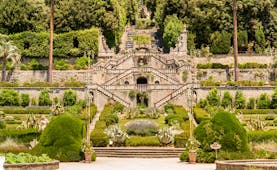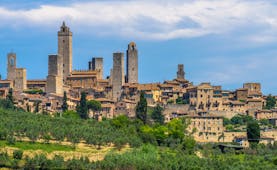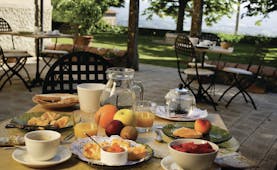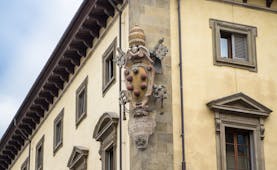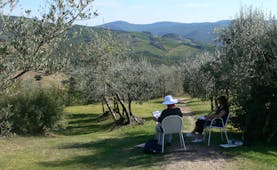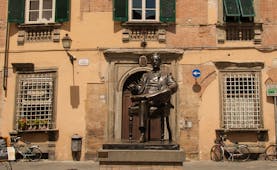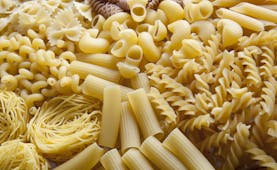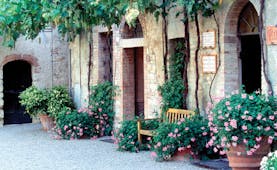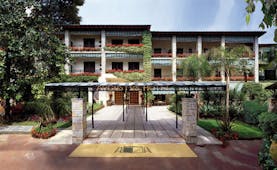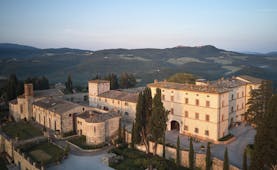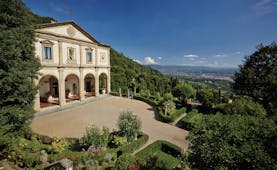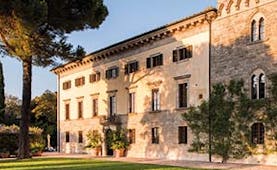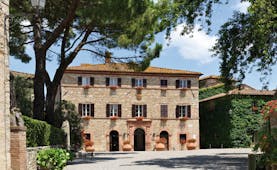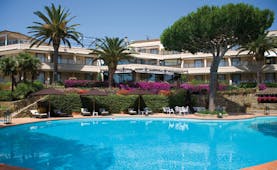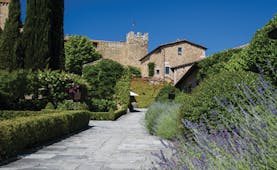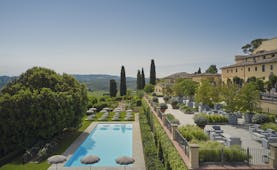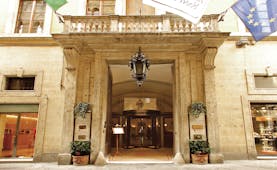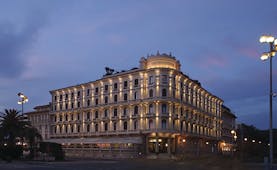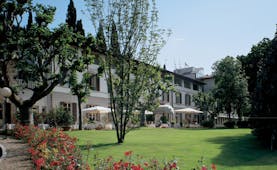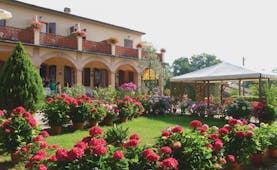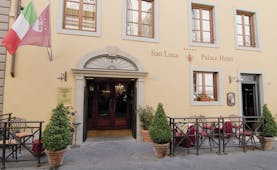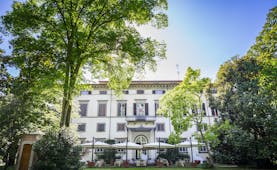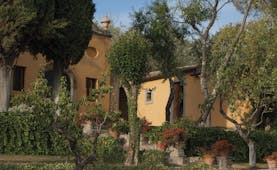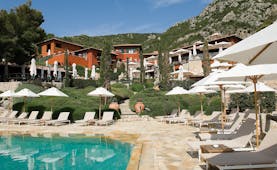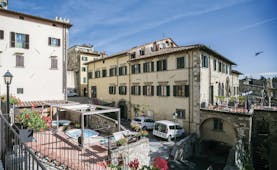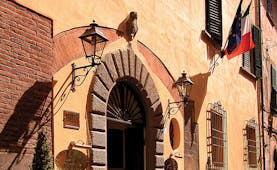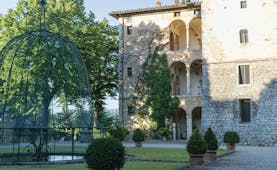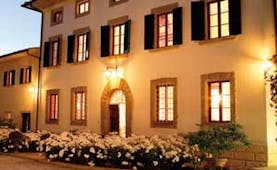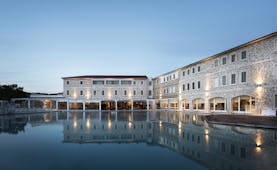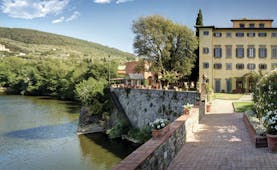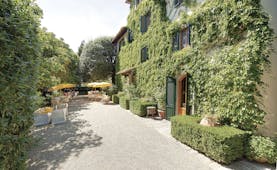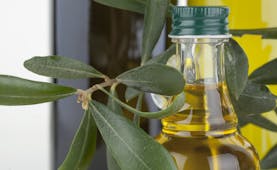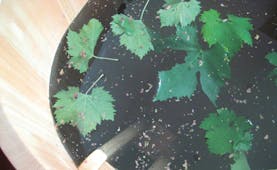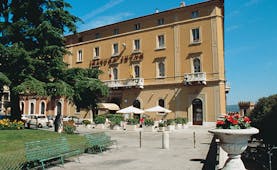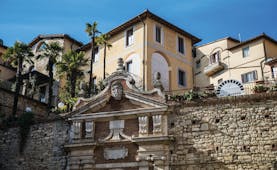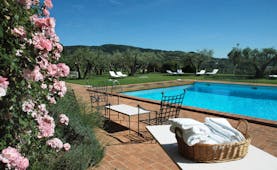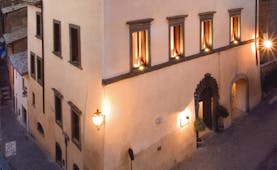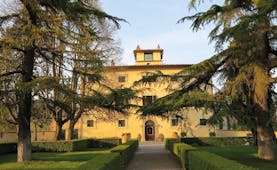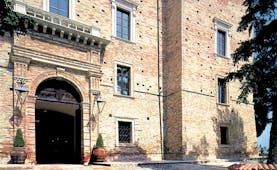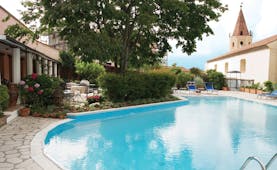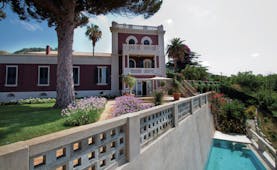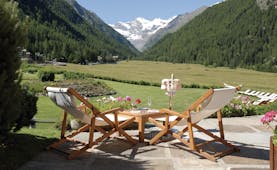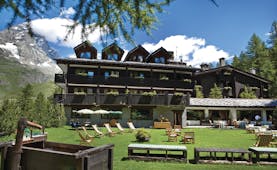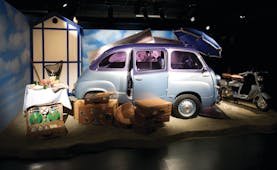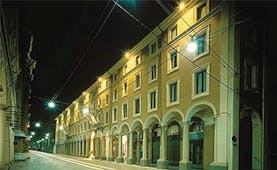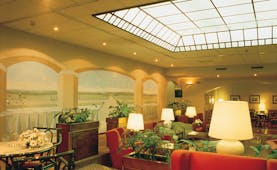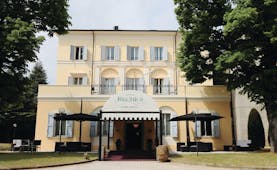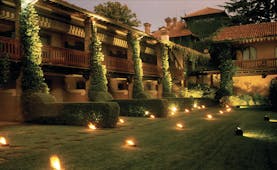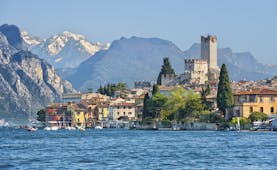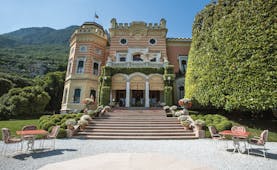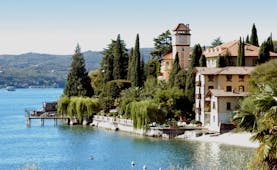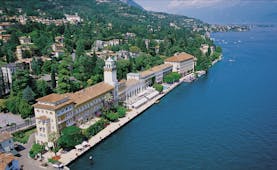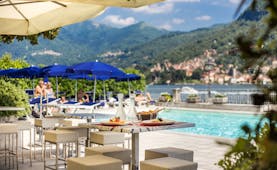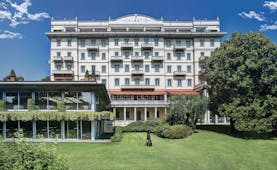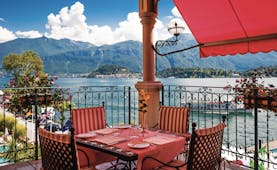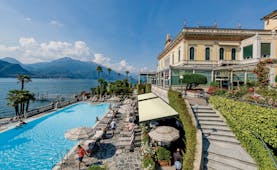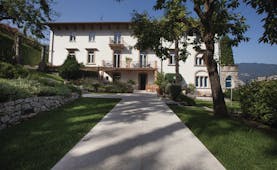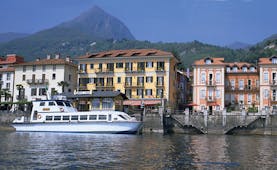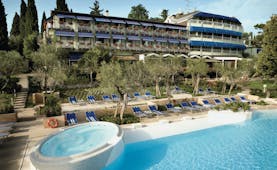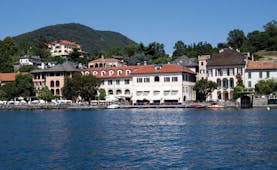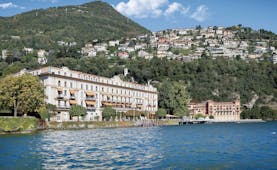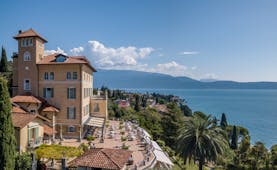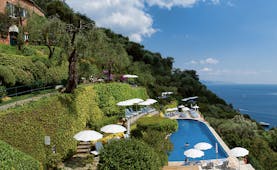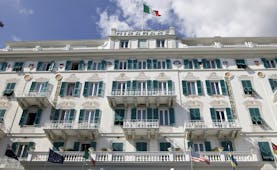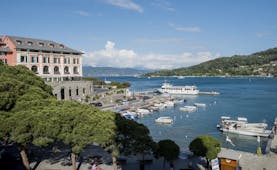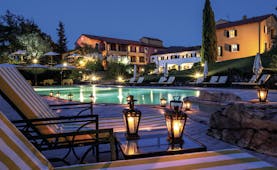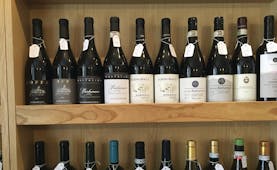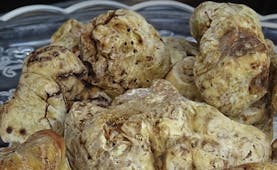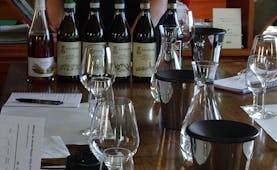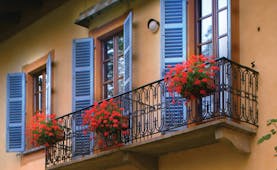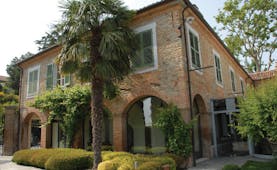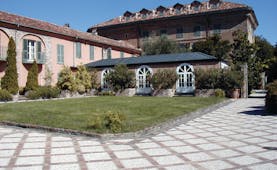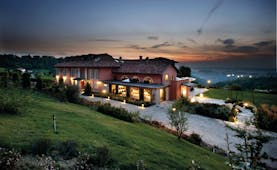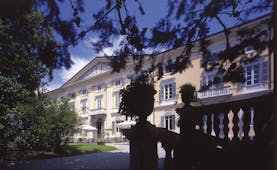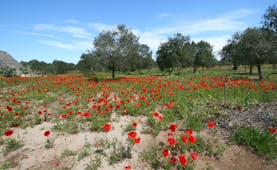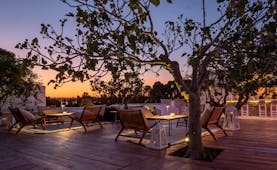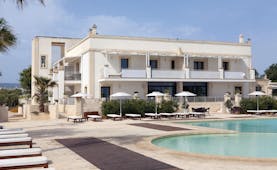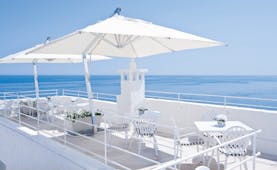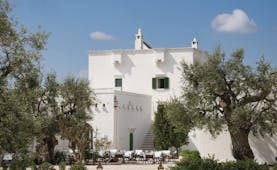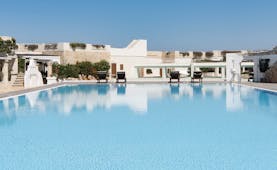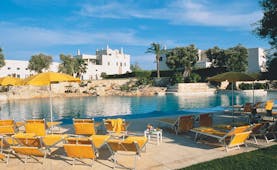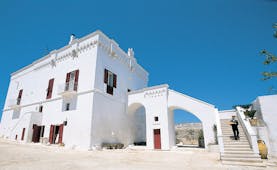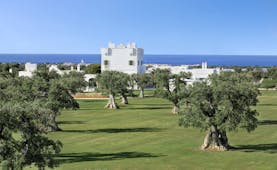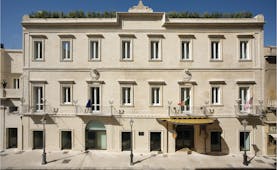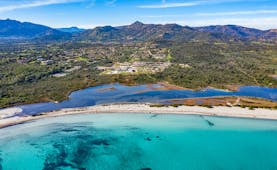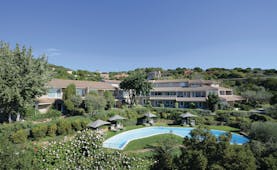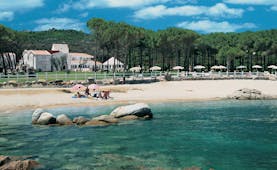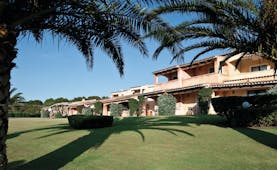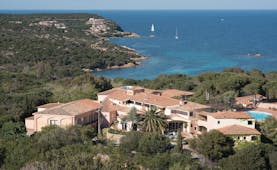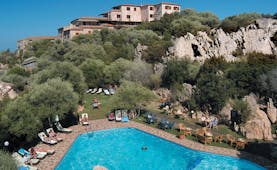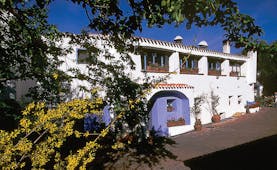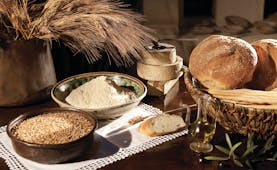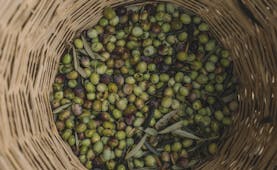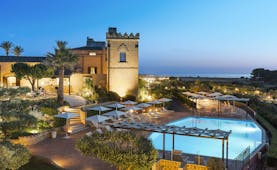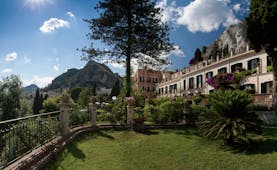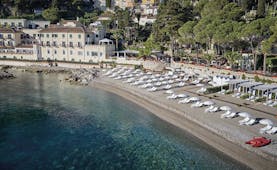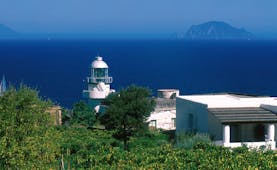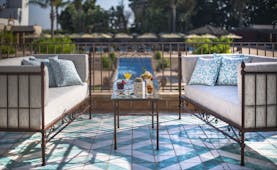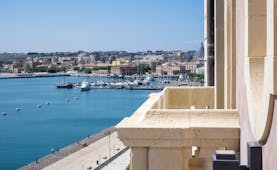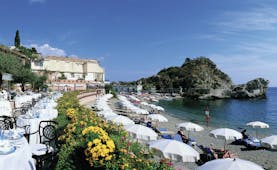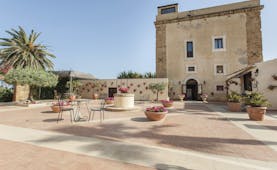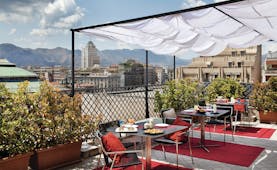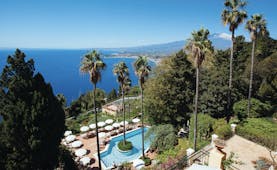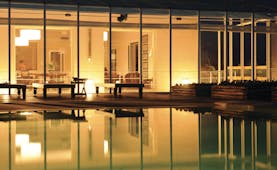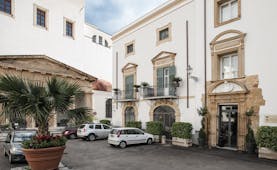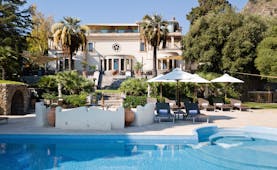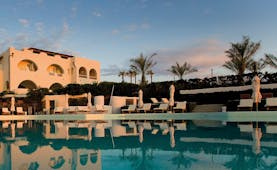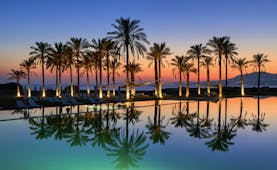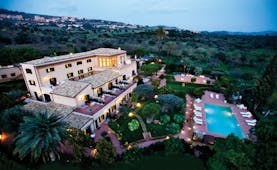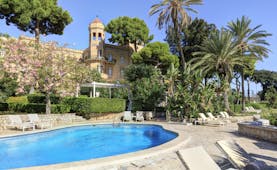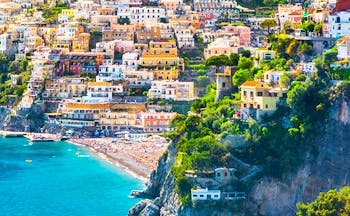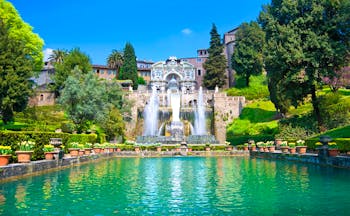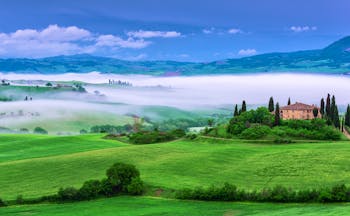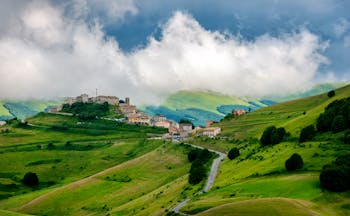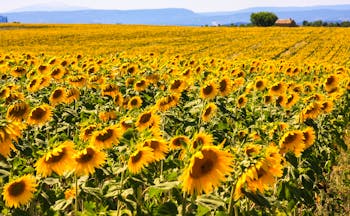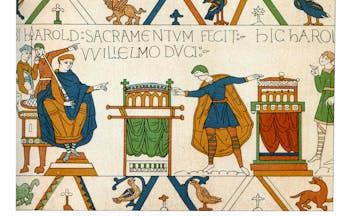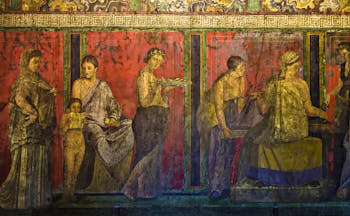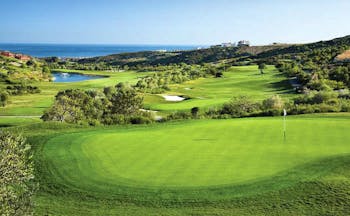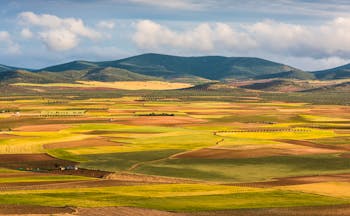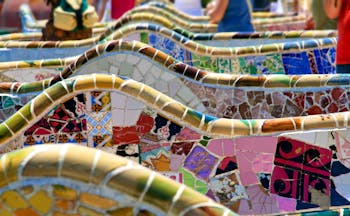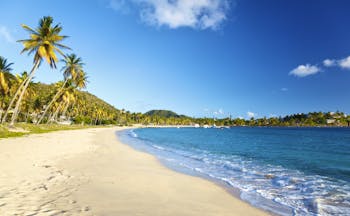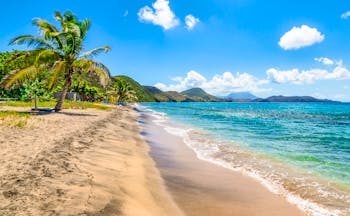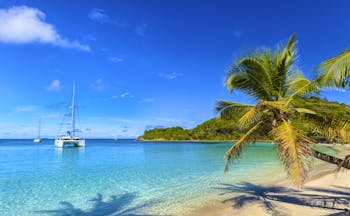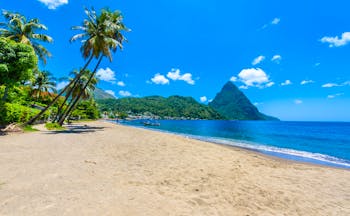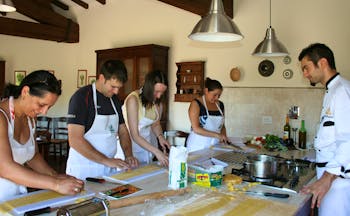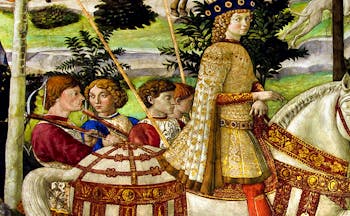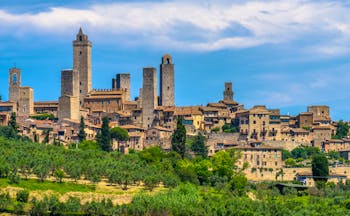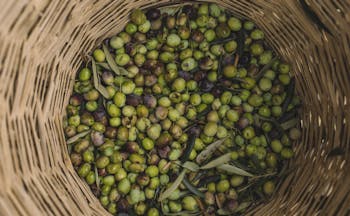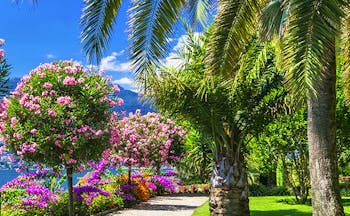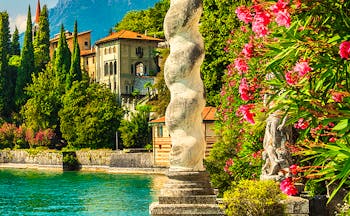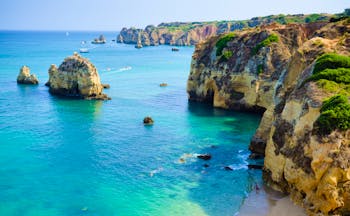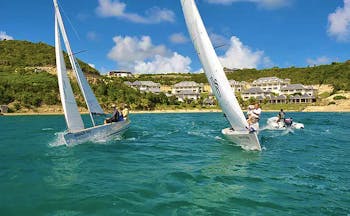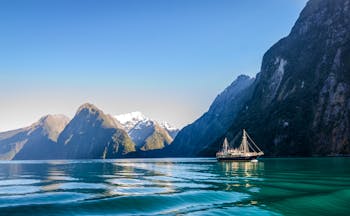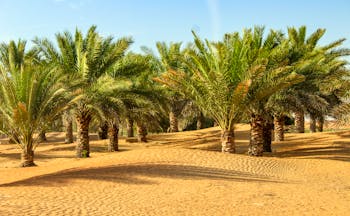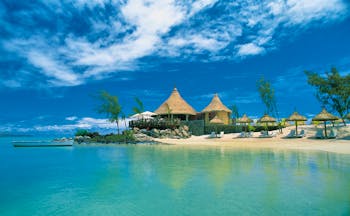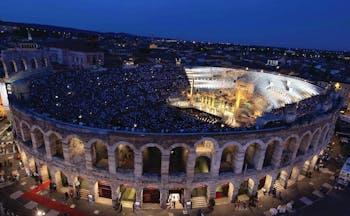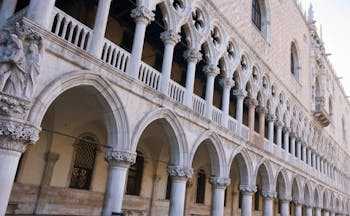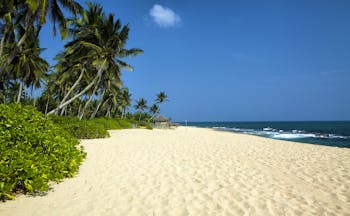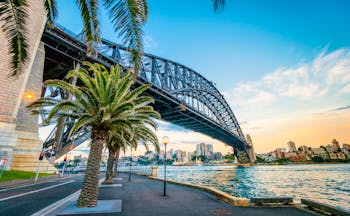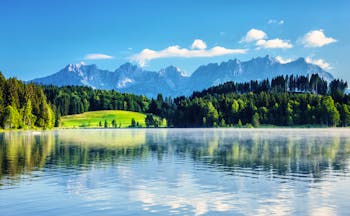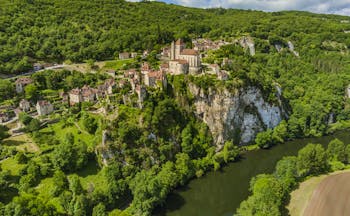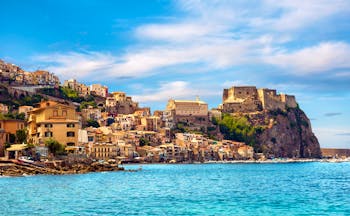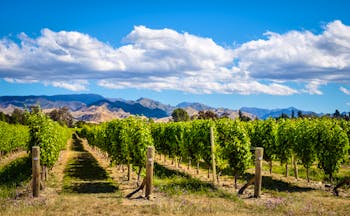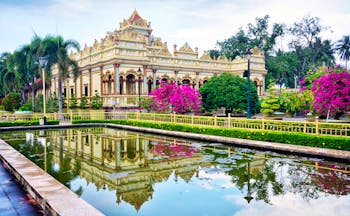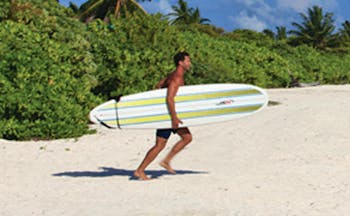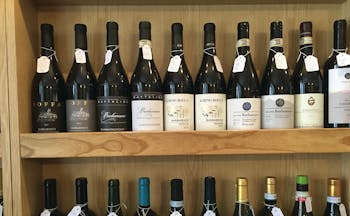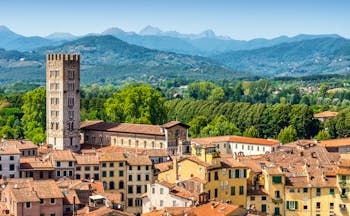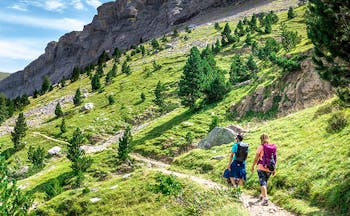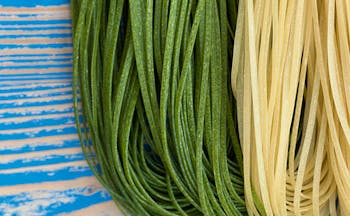Luxury Italy fly-drive tailormade holiday from Tuscany to the Amalfi Coast
Start your touring holiday by flying into Pisa, where you collect your hire-car and travel just over two hours south-east into the Tuscan countryside. Your first hotel is the Borgo San Felice, located in the heart of the Chianti Classico vineyards and expertly capturing the mood of the region - full of charm and character, it offers guests a chance to unwind in spacious and comfortable surroundings. Beautiful Tuscany is the cradle of Italian culture and the birthplace of the Renaissance. Spend your time here exploring the area, visiting Siena, wineries, and hill-top villages. After five nights you drive for about three hours through southern Tuscany and Umbria towards the Latium region around Rome. Stay for two nights near Frascati, located south of Italy’s capital city, and famous for its white wines. The scenery around Frascati and the other Castelli Romani is very attractive, with wooded hills, olive groves and vineyards whilst the old town itself provides a charming place for exploration. Then, just under three hours’ drive further south is your final destination on the Amalfi Coast. The Hotel Poseidon is a charming four-star hotel which is situated in the romantic, terraced resort of Positano. Public areas are tastefully furnished with antiques, while most bedrooms have a private terrace or balcony. The terraced sea-view gardens burst with vines, bougainvillaea, roses and flowering shrubs. Spend five nights here, with plenty of time to enjoy the dramatic coastline scenery and azure sea of the Amalfi Coast, which basks in a year-round mild and inviting climate. Here Moorish and Byzantine historical influences can be seen in the region’s architecture and colourful buildings. Witness vibrant bougainvillaea and lemon groves adding splashes of colour against the flourishing green hilltops and austere granite cliff-faces, where life in the tiny villages carries on in the same unhurried way it has for centuries. At the end of your stay in Positano, head to Naples airport where you return your hire-car and fly back to the UK.
Highlights
Chianti Classico • Visit wineries • Visit Siena • Frascati • Visit Tivoli and the Villa d’Este • Visit Anzio, Landriana or Ninfa • Positano on the Amalfi Coast
Day by day
It is worth arriving in Pisa early in the day to allow time in the famous historical city after collecting your hire-car. Visit the Torre Pendente, or ‘leaning tower,’ which has become somewhat iconic for the city, but do not neglect the many other sites of historical importance. Take the time to visit the Duomo, which dates back to 1064, the triple-spired Chiesa di Santa Maria della Spina, and explore the Museo Nazionale di San Matteo and its vast collection of medieval artworks. From Pisa, begin the drive south to San Felice, immersed in the Tuscan countryside, dotted by the Chianti vineyards and gold-stone hilltop villages. Your hotel, the Borgo San Felice, is a traditional Italian hamlet in its own right, having converted, one by one, the original houses into the luxurious and interesting hotel that stands there today. Situated conveniently between Florence and Siena, it is an excellent base for exploring the two cities that have been, for so long, in direct competition with each other. The qualities of the larger city of Florence are internationally renowned, with its beautiful cathedral and baptistery, many churches, and the monastery that contains a wealth of Florentine paintings. Siena, on the other hand, bears considerably more evidence of this competition. Its aspirations can be most obviously seen in the Piazza del Duomo, which was originally intended to be an extension of the Duomo itself. The colourfully tiled floor of the Piazza and the grand free-standing archway are all that remains of Siena’s plans. Artistically, one of Siena’s greatest assets is the baptismal font in the cathedral’s baptistery, decorated with relief panels by Donatello, Ghiberti, and Jacopo della Quercia. On the 2nd of July and 16th of August, the semi-circular Piazza del Campo hosts a medieval horserace called the ‘Palio’, in which one horseman from each of the 17 districts competes. The nearby village of San Gimignano is another testament to Italian inspiration and aspiration, with its plans to become a larger cultural centre evident in the high-reaching towers that rise above the many village squares. Or drive out to Volterra, a brooding village of tall, austerely serene buildings that line exceptionally narrow streets, encircled by deep ravines. Back at your hotel, dine in one of the two restaurants, both offering the best food that Tuscany has to offer. One afternoon take part in a cookery lesson and receive the best Tuscan souvenir available: the ability to cook the regional cuisine at home. The wines produced on the hotel’s estate can be tasted after a tour of the extensive wine cellar, or alongside an evening meal.
Your journey takes you south allowing you time perhaps to stop to visit Orvieto, perched on a rocky outcrop and its striking cathedral or Hadrian’s Villa at Tivoli to the east of Rome. You stay near Frascati for two nights. Explore the village of Frascati, the most famous of the Castelli Romani - villages famous for being the favourite retreats of city-dwelling Romans seeking fresh-air and relaxation - and taste the Frascati white wines. Be sure to try the Amaretti biscuits that originated here, or the Cesanese dry red wine that can be tasted at a nearby winery. Visit Frascati’s two most beautiful gardens, the Giardini della Landriana and the Giardino di Ninfa, or the Villa Aldobrandini, originally built for the nephew of the Pope. Plan your visit for around the 23rd of June to witness, or take part in, the Sagra della Lumaca, an outdoor snail feast, or in October to enjoy the Sagra del Vino. Venturing further out into the countryside of Latium, why not visit the cliff-side village of Anticoli Corrado, the almost inaccessible Saracinesco, or the medieval citadel of Zagarolo. Palestrina is built on the site of the Sanctuary of Fortuna Primigenia, the greatest Hellenistic temple in Italy, and therefore makes a highly interesting afternoon excursion. Perhaps visit Fiuggi, the site of the famous Acqua di Fiuggi that rises out of several natural springs and feeds the village’s spas. Michelangelo himself was said to have come to Fiuggi, seeking the water, to relieve the stress of painting the Sistine Chapel. Fiuggi itself is a town dominated by ornate hotels and tree-lined boulevards, but the Borgo Medievale di Fiuggi is a complex network of small palaces, craftsmen’s houses, churches, squares, and alleyways dating back to the 16th century. In the evenings, return to your hotel, peruse the art in the noble rooms, wander through the hanging gardens, and relax in the grand and peaceful ambience.
Your third destination on this touring holiday is the hillside town of Positano, one of the prettiest of the towns dotted along the Amalfi Coast. During the day, navigate Positano via the winding stairways, perhaps in a pair of their speciality sandals. Walk along the Sentiero degli Innamorati from the Spiaggia Grande to Fornillo beach for a spectacular view of the coastline and a rewarding relaxing endpoint. Be sure to visit the secret hamlet of Nocelle, tucked away on the Monte Pertuso hillside. Walk to Nocelle from Agerola for a gentle, downhill stroll that takes you past more breath-taking views across the Amalfi Coast and the island of Capri. For a longer day trip, drive along the Amalfi coast, through the white and terracotta towns, to Amalfi itself. While here, explore the many monuments, such as the Byzantine Duomo di Sant’ Andrea Apostolo, fronted by 57 stone steps that take you up to its three main arches. From the top of these steps in the atrium, the views across Amalfi and the sea are exceptional. The picturesque main square sits just below it, surrounded by small cafes and pretty buildings. Wander between the towering, climbing houses of the Vagliendola, or watch the Amalfi musical under the curved roof of the Antichi Arsenali, or old shipyards. From here, perhaps walk across the hilltops to the artistic village of Ravello to listen to a classical music concert on the terraces of Villa Rufolo, or venture out into the Valle delle Ferriere, with its old steps, waterfalls, bridges, forests, and beautiful abandoned buildings. Spend your evenings in the restaurant of the Hotel Poseidon, indulging in the specialities of Neopolitan Cuisine, such as mozzarella, fresh seafood, gelato, and sfogliatella pastries, finished off, of course, with limoncello made from Amalfi lemons. In the summer, dinner can be eaten under a pergola on the terrace. The hotel’s wine cellar offers the best wines of the Campania region, all available to drink alongside the delicious flavours of the Amalfi Coast.
On your final day in Italy, drive north to Naples for your return flight, and depending on the time of your flight, perhaps stopping off in Pompeii. Uncover the secrets of the ancient ruins, so well preserved by the volcanic rock, under the brooding glare of Vesuvio. You return your hire-car at Naples airport before taking your flight back to London.
I just wanted to get in touch to say thank you! We have now returned from our Orient Express, Venice trip, and it could not have been better. The memories made will last a life time. Obviously, the train experience is beyond words and Venice is such a fantastic place, but we wanted to specifically thank you for the organisation and assistance. Your attention to detail is superb and it made everything smooth and easy. Thank you again for a job extremely well done.Mrs C, May, 2024
Holiday price guide Prices from £4,520 per person based on two people sharing a double or twin room.
Holiday Code ITFD04
Call us on 01392 441245
Luxury Italy fly-drive tailormade holiday from Tuscany to the Amalfi Coast
It is worth arriving in Pisa early in the day to allow time in the famous historical city after collecting your hire-car. Visit the Torre Pendente, or ‘leaning tower,’ which has become somewhat iconic for the city, but do not neglect the many other sites of historical importance. Take the time to visit the Duomo, which dates back to 1064, the triple-spired Chiesa di Santa Maria della Spina, and explore the Museo Nazionale di San Matteo and its vast collection of medieval artworks. From Pisa, begin the drive south to San Felice, immersed in the Tuscan countryside, dotted by the Chianti vineyards and gold-stone hilltop villages. Your hotel, the Borgo San Felice, is a traditional Italian hamlet in its own right, having converted, one by one, the original houses into the luxurious and interesting hotel that stands there today. Situated conveniently between Florence and Siena, it is an excellent base for exploring the two cities that have been, for so long, in direct competition with each other. The qualities of the larger city of Florence are internationally renowned, with its beautiful cathedral and baptistery, many churches, and the monastery that contains a wealth of Florentine paintings. Siena, on the other hand, bears considerably more evidence of this competition. Its aspirations can be most obviously seen in the Piazza del Duomo, which was originally intended to be an extension of the Duomo itself. The colourfully tiled floor of the Piazza and the grand free-standing archway are all that remains of Siena’s plans. Artistically, one of Siena’s greatest assets is the baptismal font in the cathedral’s baptistery, decorated with relief panels by Donatello, Ghiberti, and Jacopo della Quercia. On the 2nd of July and 16th of August, the semi-circular Piazza del Campo hosts a medieval horserace called the ‘Palio’, in which one horseman from each of the 17 districts competes. The nearby village of San Gimignano is another testament to Italian inspiration and aspiration, with its plans to become a larger cultural centre evident in the high-reaching towers that rise above the many village squares. Or drive out to Volterra, a brooding village of tall, austerely serene buildings that line exceptionally narrow streets, encircled by deep ravines. Back at your hotel, dine in one of the two restaurants, both offering the best food that Tuscany has to offer. One afternoon take part in a cookery lesson and receive the best Tuscan souvenir available: the ability to cook the regional cuisine at home. The wines produced on the hotel’s estate can be tasted after a tour of the extensive wine cellar, or alongside an evening meal.
Your journey takes you south allowing you time perhaps to stop to visit Orvieto, perched on a rocky outcrop and its striking cathedral or Hadrian’s Villa at Tivoli to the east of Rome. You stay near Frascati for two nights. Explore the village of Frascati, the most famous of the Castelli Romani - villages famous for being the favourite retreats of city-dwelling Romans seeking fresh-air and relaxation - and taste the Frascati white wines. Be sure to try the Amaretti biscuits that originated here, or the Cesanese dry red wine that can be tasted at a nearby winery. Visit Frascati’s two most beautiful gardens, the Giardini della Landriana and the Giardino di Ninfa, or the Villa Aldobrandini, originally built for the nephew of the Pope. Plan your visit for around the 23rd of June to witness, or take part in, the Sagra della Lumaca, an outdoor snail feast, or in October to enjoy the Sagra del Vino. Venturing further out into the countryside of Latium, why not visit the cliff-side village of Anticoli Corrado, the almost inaccessible Saracinesco, or the medieval citadel of Zagarolo. Palestrina is built on the site of the Sanctuary of Fortuna Primigenia, the greatest Hellenistic temple in Italy, and therefore makes a highly interesting afternoon excursion. Perhaps visit Fiuggi, the site of the famous Acqua di Fiuggi that rises out of several natural springs and feeds the village’s spas. Michelangelo himself was said to have come to Fiuggi, seeking the water, to relieve the stress of painting the Sistine Chapel. Fiuggi itself is a town dominated by ornate hotels and tree-lined boulevards, but the Borgo Medievale di Fiuggi is a complex network of small palaces, craftsmen’s houses, churches, squares, and alleyways dating back to the 16th century. In the evenings, return to your hotel, peruse the art in the noble rooms, wander through the hanging gardens, and relax in the grand and peaceful ambience.
Your third destination on this touring holiday is the hillside town of Positano, one of the prettiest of the towns dotted along the Amalfi Coast. During the day, navigate Positano via the winding stairways, perhaps in a pair of their speciality sandals. Walk along the Sentiero degli Innamorati from the Spiaggia Grande to Fornillo beach for a spectacular view of the coastline and a rewarding relaxing endpoint. Be sure to visit the secret hamlet of Nocelle, tucked away on the Monte Pertuso hillside. Walk to Nocelle from Agerola for a gentle, downhill stroll that takes you past more breath-taking views across the Amalfi Coast and the island of Capri. For a longer day trip, drive along the Amalfi coast, through the white and terracotta towns, to Amalfi itself. While here, explore the many monuments, such as the Byzantine Duomo di Sant’ Andrea Apostolo, fronted by 57 stone steps that take you up to its three main arches. From the top of these steps in the atrium, the views across Amalfi and the sea are exceptional. The picturesque main square sits just below it, surrounded by small cafes and pretty buildings. Wander between the towering, climbing houses of the Vagliendola, or watch the Amalfi musical under the curved roof of the Antichi Arsenali, or old shipyards. From here, perhaps walk across the hilltops to the artistic village of Ravello to listen to a classical music concert on the terraces of Villa Rufolo, or venture out into the Valle delle Ferriere, with its old steps, waterfalls, bridges, forests, and beautiful abandoned buildings. Spend your evenings in the restaurant of the Hotel Poseidon, indulging in the specialities of Neopolitan Cuisine, such as mozzarella, fresh seafood, gelato, and sfogliatella pastries, finished off, of course, with limoncello made from Amalfi lemons. In the summer, dinner can be eaten under a pergola on the terrace. The hotel’s wine cellar offers the best wines of the Campania region, all available to drink alongside the delicious flavours of the Amalfi Coast.
On your final day in Italy, drive north to Naples for your return flight, and depending on the time of your flight, perhaps stopping off in Pompeii. Uncover the secrets of the ancient ruins, so well preserved by the volcanic rock, under the brooding glare of Vesuvio. You return your hire-car at Naples airport before taking your flight back to London.
I just wanted to get in touch to say thank you! We have now returned from our Orient Express, Venice trip, and it could not have been better. The memories made will last a life time. Obviously, the train experience is beyond words and Venice is such a fantastic place, but we wanted to specifically thank you for the organisation and assistance. Your attention to detail is superb and it made everything smooth and easy. Thank you again for a job extremely well done.Mrs C, May, 2024
Holiday price guide Prices from £4,520 per person based on two people sharing a double or twin room.
Holiday Code ITFD04
Our prices include
● Scheduled flight with British Airways from London to Pisa, returning from Naples to London
● Hire of a Group B car for the duration of your holiday
● Five nights’ bed and breakfast in a Classic room at the Villa le Barone in Chianti
● Two nights' bed and breakfast in a Classic room in the Paggeria at the Park Hotel Villa Grazioli in Frascati
● Five nights’ bed and breakfast in a Standard room with garden view at the Hotel Poseidon, Positano
● Concierge service and Expressions Holidays regional helpful hints
Our prices do not include
● Early check-in or late check-out at any hotels (although we can arrange this on request at additional cost)
● Any other services not mentioned above, such as transfers and meals except breakfast at hotels
● Personal holiday insurance. This is essential and cover should be in place from when you book the holiday.
● Local tourist tax, usually between Euros 1 and 3 per person per night, and payable locally to the hotel
Additional information
Driving times for this touring holiday
Pisa to San Felice 2 hours 5 minutes
San Felice to Frascati 2 hours 30 minutes
Frascati to Positano 3 hours
Positano to Naples 1 hour 20 minutes
Call us on 01392 441245
Luxury Italy fly-drive tailormade holiday from Tuscany to the Amalfi Coast
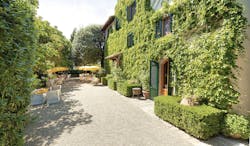
Villa le Barone is an enchanting 4-star hotel in a beautiful rural location in the Chianti countryside. Exquisite gardens, delicious cuisine and excellent wine, alongside authentic, comfortable accommodation, afford guests an intimate, relaxing taste of Tuscany.
Classic double
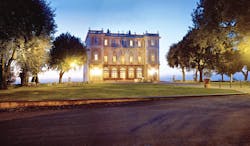
Park Hotel Villa Grazioli is a 4-star, art-filled villa of traditional elegance with wonderful views. Gourmet cuisine, choice of accommodation and park for relxation.
Classic double room in the Paggeria
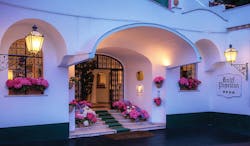
Hotel Poseidon is a charming 4-star boutique hotel in an idyllic location overlooking the romantic town of Positano. Delicious cuisine, superb wellness facilities and spectacular coastal views offer guests a truly relaxing and indulgent experience.
Standard double room with town or garden view
I just wanted to get in touch to say thank you! We have now returned from our Orient Express, Venice trip, and it could not have been better. The memories made will last a life time. Obviously, the train experience is beyond words and Venice is such a fantastic place, but we wanted to specifically thank you for the organisation and assistance. Your attention to detail is superb and it made everything smooth and easy. Thank you again for a job extremely well done.Mrs C, May, 2024
Holiday price guide Prices from £4,520 per person based on two people sharing a double or twin room.
Holiday Code ITFD04
Call us on 01392 441245
Luxury Italy fly-drive tailormade holiday from Tuscany to the Amalfi Coast
About Amalfi Coast
An Expressions tailor-made holiday to the Amalfi Coast is perfect for those looking for relaxation as well as sightseeing in coastal towns such as Amalfi, Positano, Ravello and Sorrento on the Amalfi Coast as well as the islands of Capri and Ischia. The Amalfi Coast is best known for its dramatic coastal scenery, deep gorges and violently-shaped rocks that plunge into a deep blue sea, tempered by the luxuriant vegetation that thrives in the favourable climate; lemons, oranges, olives, almonds, vines, camellias and bougainvillaea. Human habitation thrives in the tiny fishing villages in rocky coves and in the pink and white-washed flat-roofed or domed buildings that hug the cliffs in layers. The Amalfi Coast's history of trading throughout the Mediterranean still shows in the Moorish and Byzantine architectural styles; domes and arcades, wrought-iron balconies and colourful ceramic tiles which depict the region. The cuisine of the Amalfi Coast is light and simple, based on local fish and shellfish, lemons and oranges, mozzarella and fresh herbs. Whilst the climate of the Amalfi Coast is particularly appealing too, there are numerous excursion and sightseeing possibilities for your holiday including the islands of Procida, Capri and Ischia, the city of Naples, the Roman towns of Pompeii and Herculaneum, the romance of Ravello, the bustle of Sorrento and the charm of Positano.
Highlights of the Amalfi Coast
A drive along the Amalfi coast from Positano to Amalfi offers stunning and breath-taking scenery. Visit the Emerald Cave near Vettica Minore by boat. Enjoy the superb view of the coast from the 13th Century Gothic Villa Rufolo in Ravello (we offer garden tour holidays of the Amalfi Coast and Capri including a visit to Villa Rufolo). Spend a full day visiting the awe-inspiring site of Pompeii, visiting the remains of the villas containing both vibrant and delicate frescoes. Herculaneum is nearby and also worth visiting. The Greek site of Paestum has outstanding Doric temples. In the resort of Amalfi stroll along the Via Genova and the Via Capuano taking in the typical architecture of Campania with the flower-covered balconies, narrow alleyways leading to fountain-filled little squares. Take the chairlift on Capri to Monte Solaro or walk to the Migliara Belvedere for a view of the lighthouse. On Ischia visit the beaches of Citara and Maronti and enjoy a morning's walk to Monte Epomeo for panoramic views of the coast. Well worth visiting is the often-forgotten island of Procida between Naples and Ischia, with its vines and fishing, flat roofed white houses and atmosphere most characteristic of the region in bygone days. Visit Vietri for ceramics as well as stalls of lemons, garlic and peppers.
Cultural highlights of the Amalfi Coast
The House of the Vettii at Pompeii, the baroque Palazzo Reale at Caserta, Villa Jovis in Capri, the Doric temples of Paestum, Michelozzo`s tomb of Cardinal Rinaldo Brancaccio in the 14th Century church of Sant`Angelo, and in Naples: `Modesty` by Antonio Corradini in the Cappella Sansevero, the Gothic church of San Lorenzo Maggiore and the Majolica tiles in the cloisters of the 14th Century Santa Chiara.
Festivals on the Amalfi Coast
The Ravello music festival June to July, the festival of San Costanzo on 14 May on Capri, the festival of Sant`Antonio in Anacapri on 13 June, the festival of Madonna della Liberta in Marina Grande in September, Lo Sbarco dei Saraceni in Positano on the second Sunday in August.
Gastronomy of the Amalfi Coast
Neapolitan cuisine is now famous the world over for its use of tomatoes, pizza, mozzarella cheese, dried pasta and lemons. Local specialities include Mozzarella in Carrozza, Panzanella alla napoletana, Pasta alla sorrentina (with scamorza cheese and tomatoes), Sartu (an elaborate rice pie stuffed with meats, sausages, mushrooms etc), Timballo di Maccheroni (also elaborate with maccheroni baked in a pie and a sauce of chicken livers, mushrooms and black truffles), Carciofi ripieni alla napoletana (baked stuffed artichokes), Coviglie (a mousse-like dessert), Sproccolati (sun-dried figs on sticks) and Sfogliatelle (breakfast pastries). The region produces a number of excellent red and white wines. The most famous white is called Lacrimi Christi, from vines grown on the slopes of Mount Vesuvius. Taurasi from Avellino is a full-bodied red. Capri, Ischia and Sorrento all produce their own local wines.
Call us on 01392 441245
Luxury Italy fly-drive tailormade holiday from Tuscany to the Amalfi Coast
About Tuscany
An Expressions tailor-made holiday in Tuscany allows you to appreciate its classical landscape of rolling hills and vineyards dotted with olive and cypress trees, its misty green-grey mountains that are never too far distant, and hill-top towns of rich brown and gold stone houses. This combines with the beauty of the works of art contained in the towns and villages throughout Tuscany to create an inspirational union of the spirit and the senses. There is an intrinsic comfort in the supposed contrast between the delicacy of a Botticelli and the heartiness of Ribollita soup, yet both are typical of this fascinating region. As birthplace of the Renaissance, the impact of Tuscan and particularly Florentine traditions and culture on European heritage is fundamental to our way of life. In addition to the obvious attractions of the scenery of Chianti and the art cities of Florence and Siena, there are the less well-known regions south of Siena with its moon-like landscape of hills, the patchwork vineyards of Montalcino, the coastal marshlands of the Maremma, the spas of Montecatini and Saturnia, the islands of Elba and Giglio, and the Casentino with the source of the Arno and abundant mushroom crops. Wherever you travel on holiday in Tuscany, you will be inspired by the beauty of your surroundings and the way of life, which is quintessentially that of Italy too.
Highlights of Tuscany
Famous vineyards producing wines of Chianti Classico, Brunello di Montalcino, Vino Nobile di Montepulciano. Alabaster is produced in Volterra. Gold and silver are worked in Florence and the Ponte Vecchio is lined with jewellery shops. Marbled paper and stationery is a speciality of Florence. Ceramics and hand-painted majolica from raw terracotta from Impruneta to the glazed pottery of Siena are to be found throughout Tuscany. Lucca has traditionally produced silk and hand-woven fabrics. Leather goods including shoes, handbags and belts are to be found from market stalls to designer shops such as Gucci and Ferragamo. Interesting markets include the Mercato dell' Antiquariato which sells furniture from antiques to bric-a-brac in Arezzo on the first weekend of every month, in Pisa on the second weekend and in Lucca on the third weekend. The 'wild' Maremma is known for its long-horned white cattle and cowboys (butteri) and natural springs including Saturnia.
Cultural highlights of Tuscany
As birthplace of the Renaissance, Tuscany contains a wealth of treasures: Giotto`s Campanile and Brunelleschi`s Dome in Florence, the Tombs of Galileo and Michelangelo in Florence`s Santa Croce, Botticelli`s `Birth of Venus` and `Primavera` and the portraits of the Duke and Duchess of Urbino by Piero della Francesca in the Uffizi, Michelangelo`s `David` in the Accademia, the architecture of the Piazza della Signoria in Florence, `The Tuscan Maremma` painting by Giovanni Fattori in the Palazzo Pitti in Florence, the Piazza del Campo in Siena, `The Legend of the Cross` frescoes by Piero della Francesco in Arezzo, `The Creation` fresco by Bartolo di Fredi in the Collegiata in San Gimignano, Romanesque church of the Collegiata in San Quirico d`Orcia, 14th Century Fortezza of Montalcino, Renaissance masterpiece of the church of Madonna di San Biagio at Montepulciano, the abbey-church of Sant`Antimo, mediaeval Lucignano and the towers of San Gimignano, the Etruscan Museum in Cortona.
Festivals in Tuscany
Many of Tuscany`s festivals resound with the flamboyance of the Renaissance and keep Tuscans and visitors alike in touch with the region`s rich history. Others are linked to Tuscany`s hearty traditions of eating and drinking. The most famous is Siena`s Palio which takes place on 2 July and 16 August each year. Others include the Sagra del Tordo (Festival of the Thrush) in Montalcino on the last Sunday in October when there is an archery contest and charcoal-grilled thrush are a delicacy. In Florence, Calcio in Costume (a football match played in mediaeval costume) takes place in June. Pisa has the Giocco del Ponte (Game of the Bridge), a mock battle in Renaissance dress also held in June. Viareggio celebrates Carnival on Shrove Tuesday with a huge display of flamboyant floats. In May and August Massa Marittima holds the Falcon Contest.
Gastronomy in Tuscany
Simple country food is at the heart of Tuscan cooking. Regional dishes include Bruschetta (bread or ciabatta toasted and rubbed with garlic, olive oil and salt), Ribollita (bean, cabbage and bread soup), Pasta with hare or wild boar sauce, Porcini mushroom and truffle dishes, Bistecca all Fiorentina (thick cut of sirloin and fillet beef), Cantucci (almond and honey biscuits) served dipped in Vin Santo, Panforte (chocolate, nut and spice cake). Pecorino cheese made from sheep's milk. Local wines include the white Vernaccia di San Gimignano and the Bianco di Pitigliano. Famous reds include Chanti Classico, Brunello di Montalcino and the Vino Nobile di Montepulciano. Vin Santo made from semi-crushed grapes left for several months is an excellent dessert wine.
Call us on 01392 441245
Luxury Italy fly-drive tailormade holiday from Tuscany to the Amalfi Coast
About Latium
An Expressions tailor-made holiday to Latium holds countless treasures for the visitor. The whole region and its very geography and history produce a wealth of varied scenery and sites. Latium (or Lazio in Italian) lies at the very cultural and historical heart of Italy, with Rome at its centre and is bordered by the Apennine mountains to the east and the Tyrrhenian Sea to the west. A journey through Latium is a journey back to the heart of European civilisation with important Etruscan and Roman remains in evidence throughout the region. Their ancient civilisations are to be found in the obvious and not so obvious places, from temples to stones, from arches to pavements. There are also numerous villas, gardens, abbeys, spas, lakes and hill towns. The countryside is rich and fertile, hilly inland and flat towards the coast. Palms, olives, vines and fruit abound. On the other side of Italy is the little-known region of Abruzzo, rich in beautiful coastline and mountains. It is easily combined with Latium for your holiday and worth visiting for a more off-the-beaten-track region.
Highlights of Latium
There are a number of places nearby that are worth visiting: The hot springs at Tivoli and Fiuggi. The Alban Hills and the 13 hilltop towns surrounded by vineyards and elegant villas of the Roman aristocracy over the years, including the summer palace of the Pope at Castel Gandolfo. Visit mediaeval Anguillara on Lake Bracciano north of Rome. Explore the countryside of the Ciociaria region near Anagni (the name of the region comes from the bark clogs worn by the locals until about twenty years ago). Ostia Antica now inland was once ancient Rome's trading port and the ruins offer a fascinating insight into the Roman way of life. The region north of Rome is very rich in Etruscan remains -visit the necropoli at Tarquinia and Cerveteri. Great monasteries were founded around Rome, especially at Subiaco and Montecassino. The best beaches on the Lazio coast are to be found between Sabaudia and Gaeta. From the town of Bolsena take boat trips to the islands of Bisentina and Martana on Lake Bolseno. Visit the Island of Ponza off the coast near San Felice Circeo.
Cultural highlights of Latium
The gardens of the Villa d`Este at Tivoli. Hadrian`s Villa at Tivoli. Villa Lante near Viterbo. Palazzo Barberini in Palestrina which houses a 1st Century BC mosaic depicting the Nile in flood. The Byzantine frescoes in the crypt of the 11th Century Basilica of Santa Maria in Anagni. The Palazzo Farnese by Vignola at Caprarola. The 13th Century Italian Gothic church of Santa Maria Maggiore at Ferentino. 17th Century frescoes by Domenichino in the chapel at Grottaferrata.
Festivals in Latium
Spring is the main season for festivals in Latium. Genzano holds the `Infiorata`, Marta has the `Barabbata`. In the autumn there is the `Sagra dell`uva` grape festival in Marino. The influence of Rome is obvious in this area, supplemented by either proximity to coast or country.
Gastronomy in Latium
Sage, rosemary and bay are used extensively to season. Specialities of the region include Spaghetti alla carbonara, Suppli (croquettes made with rice, meat and mozzarella), Carciofi alla giudia (artichokes fried crisp in olive oil and sprinkled with lemon juice), Saltimbocca alla romana (veal with ham and sage), Torta di ricotta. Frascati is the best-known white wine of the region although similar wines made from the Trebbiano grape include Colli Albani and Castelli Romani. Very few red wines are produced, but the best is Torre Ercolana.
Call us on 01392 441245
Luxury Italy fly-drive tailormade holiday from Tuscany to the Amalfi Coast
About Umbria
An Expressions tailor-made holiday to Umbria offers the chance to explore a lesser-known rural area of Italy. Umbria is a gentle, undulating land of hills, river valleys, a patchwork of fields, vines and olives similar in many ways to her better-known neighbour, Tuscany, yet in other ways so very different. Umbria evokes a deeper rusticity, a less ‘polished' feel than Tuscany, the secrecy and mysticism of the Middle Ages and yet because of this holds a charm and fascination for the visitor. The hill towns are superb in their own right; steep, narrow cobbled streets with overhanging arches, the grey stone enlivened here and there by pots of geraniums. Ancient crafts remain very much alive, with ceramics and woodwork in particular. Umbria abounds in Roman architecture with Gubbio and Spoleto being noteworthy and there are Etruscan remains too. The food is hearty and earthy too with truffles and porcini, sausages and salami being regional specialities. Yet Umbria also has some of the most important religious sites in Europe, such as the Basilica of St Francis in Assisi and throughout the region are to be discovered outstanding works of art by Perugino, Giotto, Pinturicchio and Gozzoli. Umbria is an intriguing region that awaits further discovery.
Highlights of Umbria
Shop for ceramics in Gubbio, truffles and cooked meats from Norcia. Dramatic landscapes of the Monte Sibillini and one of Europe's highest waterfalls called the Cascate delle Marmore near Terni. One of Italy's beauty spots is the Fonti del Clitunno south of Trevi. See carpentry and woodworking in Todi. Visit the wine museum in Torgiano. Forests of holm oak near Spoleto. Antique fair in April and a national craft fair in August and September in Todi.
Cultural highlights of Umbria
A mixture of religious and secular art and architecture makes Umbria fascinating. The cities of Perugia and Assisi are great centres but the smaller towns of Gubbio, Todi, Spoleto and Spello are also of outstanding interest. Highlights of the region include the Fontana Maggiore in the Piazza IV Novembre in Perugia. Perugia`s Galleria Nazionale containing works by Perugino and Pinturicchio. Gattapone`s Palazzo dei Consoli in Gubbio and his Ponte delle Torri in Spoleto. The `Adoration of the Magi` by Perugino in the church of the Madonna della Lacrime in Trevi. Frescoes by Matteo da Gualdo in the Pinacoteca of Gualdo Tadino. `San Sebastiano` by Luca Signorelli in the Pinacoteca at Citta di Castello. Frescoes by Giotto and Lorenzetti in the Basilica of St Francis in Assisi.
Festivals in Umbria
Perugia has a jazz festival in the summer and the Sagra Musicale music festival held in its churches in September. Orvieto holds concerts in August and has a firework display on the 15th. Spoleto`s Festival of the Two Worlds, a world-class cultural event, takes place June and July. Spello holds its Infiorata in June when the streets are decked with flowers. Foligno holds jousting in September during its Giostra della Quintane.
Gastronomy in Umbria
Umbria's gastronomy is very much a product of its earth and waters: Mushrooms and truffles flavour many dishes, Game and wild boar, Trevi produces black celery, olive oil and black truffles, Pecorino cheese from Torgiano, Todi offers Panzanella, dried bread soaked and marinated in sliced tomato, basil, onion and olive oil, Sweet macheroni with walnuts, Salami and sausages are a regional speciality, Trout from the rivers and perch from Lake Trasimeno, Strangozzi and Bici are local pasta, often flavoured with porcini and truffles. Umbria produces some high quality robust red wines near Torgiano (Rubesco produced by Lungarotti for example) and Orvieto is known for its white wine.

